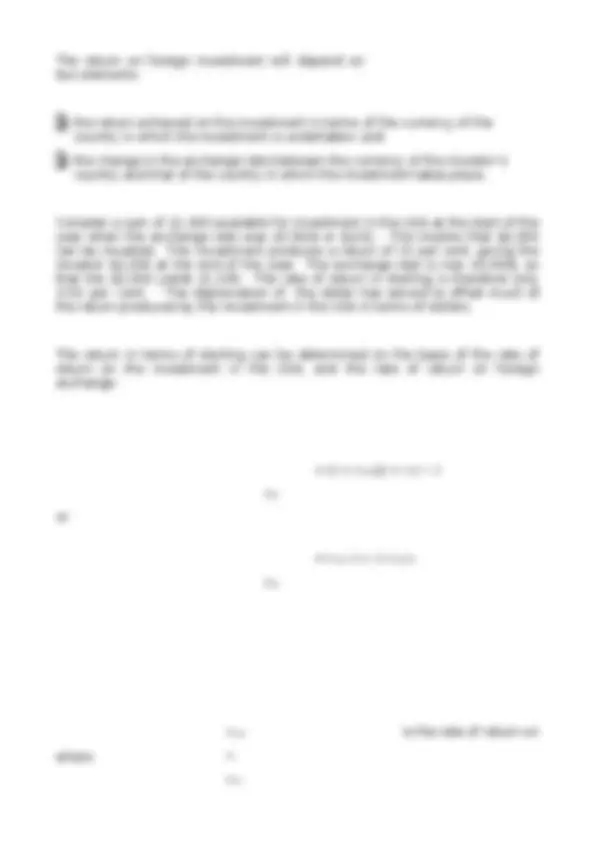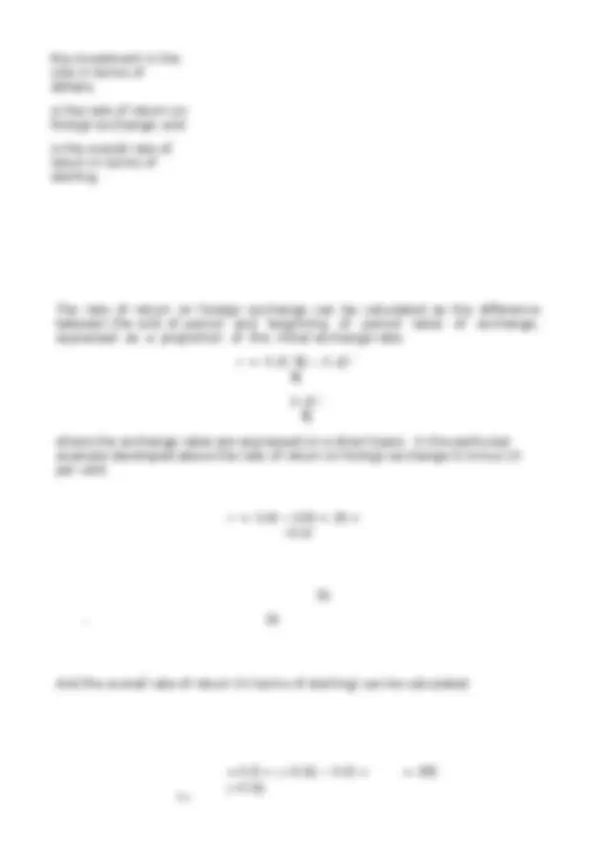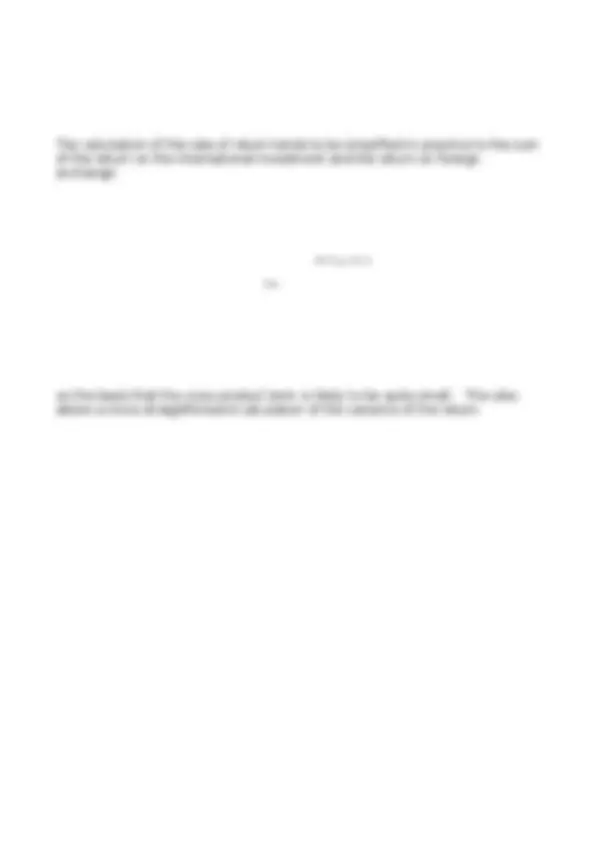






Study with the several resources on Docsity

Earn points by helping other students or get them with a premium plan


Prepare for your exams
Study with the several resources on Docsity

Earn points to download
Earn points by helping other students or get them with a premium plan
Community
Ask the community for help and clear up your study doubts
Discover the best universities in your country according to Docsity users
Free resources
Download our free guides on studying techniques, anxiety management strategies, and thesis advice from Docsity tutors
Summary about International Portfolios,international investment ,International Diversification.
Typology: Lecture notes
1 / 8

This page cannot be seen from the preview
Don't miss anything!





International Portfolios
Elton and Gruber (1996) illustrate the diversification possibilities of international investment by considering the correlation of stock indices for the major stock markets of the world. The table presented by Elton and Gruber is reproduced as figure 1.14, revealing that the typical correlation coefficient is about 0.40. To put these correlation coefficients into context Elton and Gruber point out that correlation coefficient for two portfolios of 100 securities chosen at random from those quoted on the NYSE is around 0.95. The nature of the potential benefits offered by lower correlation of returns found across can be illustrated by considering the results of naïve diversification on an international basis. Figure 1.15 reproduces the results of a study undertaken by Solnick (1997).
Figure 1.15: International Diversification
Percent Risk
10
0
Stocks
27
International stock
Number of stocks
Source: B. Solnik (1994)
the investment in the USA in terms of dollars;
is the rate of return on foreign exchange; and
is the overall rate of return in terms of sterling.
The rate of return on foreign exchange can be calculated as the difference between the end of period and beginning of period rates of exchange, expressed as a proportion of the initial exchange rate:
r = S^1 (£ / $)^ −^ S^^0 (£ / $)
S 0 (£ / $)
where the exchange rates are expressed on a direct basis. In the particular example developed above the rate of return on foreign exchange is minus 10 per cent.
r = 0.45 − 0.50 = .05 = −0.
x.
And the overall rate of return (in terms of sterling) can be calculated
rUK
The calculation of the rate of return tends to be simplified in practice to the sum of the return on the international investment and the return on foreign exchange:
rUK
= r USA + rx
on the basis that the cross product term is likely to be quite small. This also allows a more straightforward calculation of the variance of the return.
on the foreign investment and foreign currency commitment is quite small. For example the figure for the UK are as follows:
Foreign Investment Risk for US Investors
Domestic Risk Exchange Risk Total Risk UK 18.82 12. 8
If the correlation coefficient had been zero the standard deviation would have been 20.69 – little different from the reported figure.
Assuming no correlation between movements in the UK market and the dollar/ pound exchange rates the variance can be calculated as
(The variance term in the standard portfolio is assumed to be zero and omitted). Even though in some time periods exchange rate fluctuations may dominate the returns generated by assets in a foreign country exchange rate movements tend not to be a critical determinant of the performance of internationally diversified portfolios in the longer term. As long as an internationally diversified portfolio is held the depreciation of some currencies will tend to be offset by the appreciation of others. (However, during the sustained rise of the dollar against most other currencies in the first half of the 1980’s this would not have been seen as a very convincing argument by most US portfolio managers).